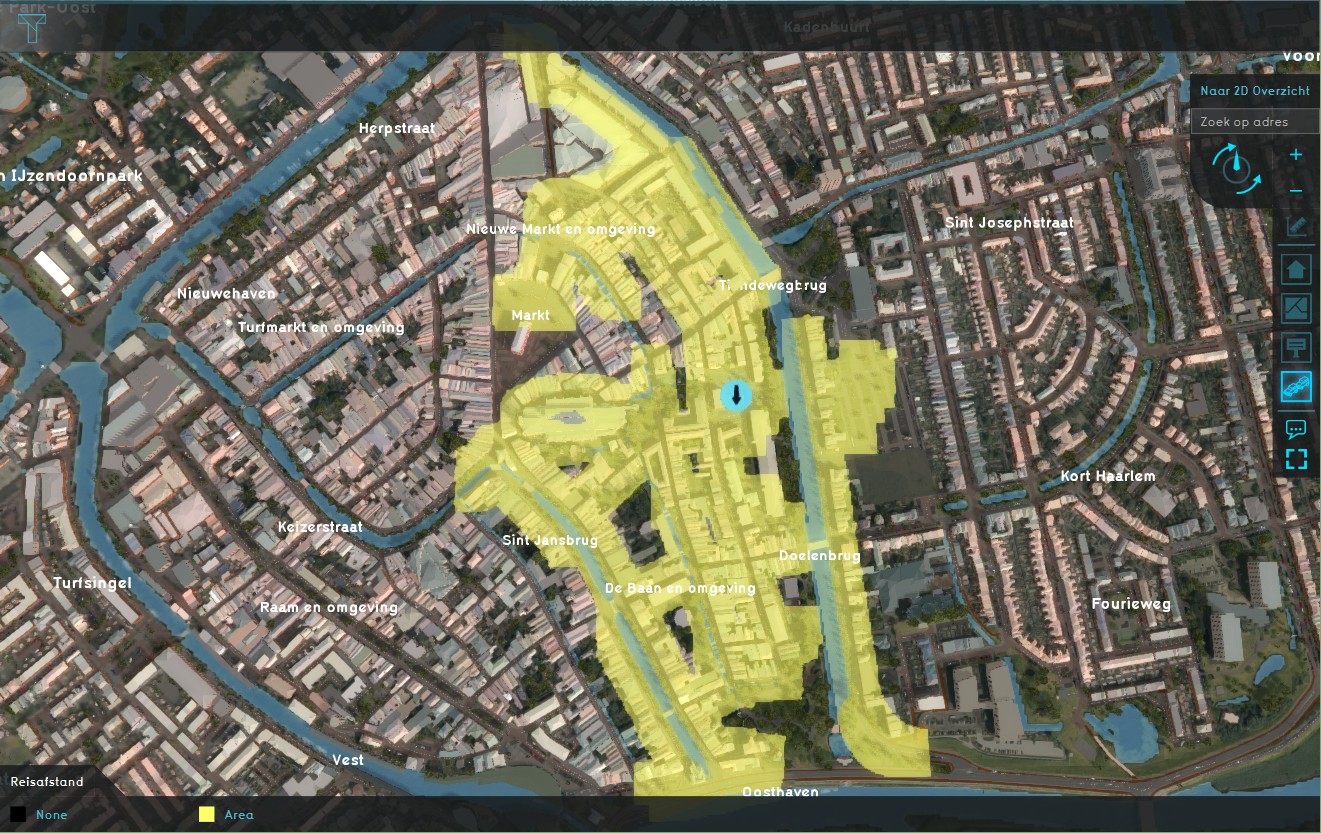Travel Distance Overlay: Difference between revisions
| Line 28: | Line 28: | ||
* [[How to edit an overlay legend|Edit an overlay legend]] | * [[How to edit an overlay legend|Edit an overlay legend]] | ||
==Notes== | ==Notes== | ||
* A likely improvement will be the support of diagonal travel distance, also known as ''octile distance''. Here the diagonal distance between two cells is <math>\sqrt{2}</math> times the cell size, instead of the same distance in all eight directions. | * A likely improvement will be the support of diagonal travel distance, also known as ''octile distance''. Here the diagonal distance between two cells is <math>\sqrt{2}</math> times the cell size, instead of the same distance in all eight directions. | ||
* This method does not take into account driving lane and one-direction limitations. | |||
{{Overlay nav}} | {{Overlay nav}} | ||
Revision as of 13:41, 16 March 2021
Read more about Beta features.

The Travel Distance Overlay is a grid overlay which shows the distance that can be traveled from a certain starting point (routing area). The traffic is split between motorized and pedestrian traffic, based on the road type (roads vs sidewalks).
The overlay also uses an additional fill distance, which allows the result to expand to the area around the accessible roadways, to include accessible surrounding constructions. This allows users to query constructions that are within acceptable distance of cells which are within the travel distance.
The calculation model behind the overlay is based on the same algorithm as used in the Watershed Overlay. The travel distance will therefore not be the exact travel distance, but the 8-direction Chebyshev distance.
Example
The travel distance overlay can be used to visualize the travel distance from certain areas of interest (schools, shops, sports centers, etc), based on the roads project area. If we take a school as example, we can visualize which houses (and other buildings), within a range of 20m to a connecting sidewalk, are within a walking distance of 500m from the school of the example.
Keys
Attributes
How-to's
- How to add the Travel Distance Overlay
- How to create a Routing area
- Adding, duplicating and removing areas
- How to add and remove an Overlay
- Edit an overlay legend
Notes
- A likely improvement will be the support of diagonal travel distance, also known as octile distance. Here the diagonal distance between two cells is times the cell size, instead of the same distance in all eight directions.
- This method does not take into account driving lane and one-direction limitations.